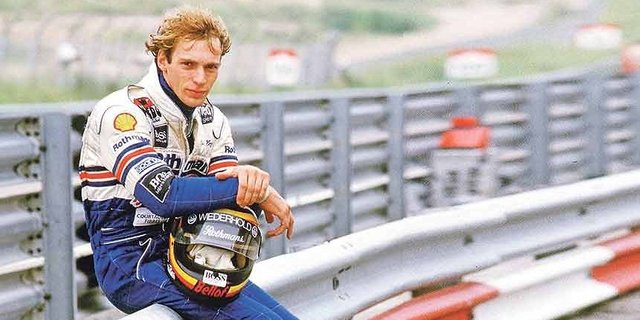[Cars] Speed, Passing and Commitment – The eau rouge Raidillon combination

The eau rouge Raidillon is the most famous part of the Belgium formula 1 track Circuit de Spa-Francorchamps. It is named after a tiny river nearby called the Eau Rouge (French for red water). It takes a lot of skill for the driver to pass the combination well, as Fernando Alonso once described, and when you go uphill as a driver you almost can’t see anything except of the clouds ... or the rain. When handling it right you exit the combination with the right amount of speed and have a good chance of passing on the long uphill straight afterwards. To overtake within the combination on the other hand, is a damn tricky thing to do and needs true commitment. Kimi Raikkönen showed these three things - Speed, passing and commitment - when he overtook Michael Schumacher in 2012.
“But it is also an important corner for the driver's feeling. It makes a special impression every lap, because you also have a compression in your body as you go through the bottom of the corner. It is very strange – but good fun as well." Fernando Alonso
The big challenge for the drivers is to take the Eau Rouge flat out. An average sport car can take the curve with a speed of 160 km/h, in a F1 car however, over 300 km/h are possible. The difference in speed can be best experienced in this overlap video.
Sadly, the history of the combination is also linked to numerous deadly crashes. One is related to a very talented German racing driver, Stefan Bellof. In 1985 he tried to overtake Jacky Ickx in a similar manner as Kimi Raikkönen did in 2012. However, after entering the left kink of the corner, Bellof moved to the left and came into contact with Ickx. Both cars spun into the barriers. Bellof’s Porsche immediately caught fire and it took the rescue team more then 10 minutes to extricate him out of the car. Minutes later in the track hospital the driver was pronounced dead of massive internal injuries. You might wonder at this moment why I am talking about a race driver, fairly unknown to most people, who admittedly has never even won a formula 1 grand prix?

The reason is this : at the moment the car industry, and especially the sport car sector, reached a point where manufacturers are battling each other for constructing the best performing hypercar. The latest Netflix documentation “Apex: The story of the hypercar” perfectly describes how small exotic car manufacturers challenge well-established brands like Ferrari and Porsche. This whole David vs. Goliath battle leads to a perilous racetrack in Germany where drivers can reach new heights of speed and performance --> “The Nürburgring Nordschleife” is a German race track about 20,8 km long and at the moment the Mekka for all companies willing to prove themselves against each other, if they dare! In the meantime, while everyone is talking about Pagani, Koenigsegg and McLaren, no one is asking the crucial question: who was the fastest driver ever around this track?
In the qualifying for the 1000 km Nürburgring race in 1983 Stefan Bellof set the unofficial all time record of 6:11.13. The record is still standing until today. What did it take Bellof to set this time at "The Green Hell"?
--> speed, passing and commitment